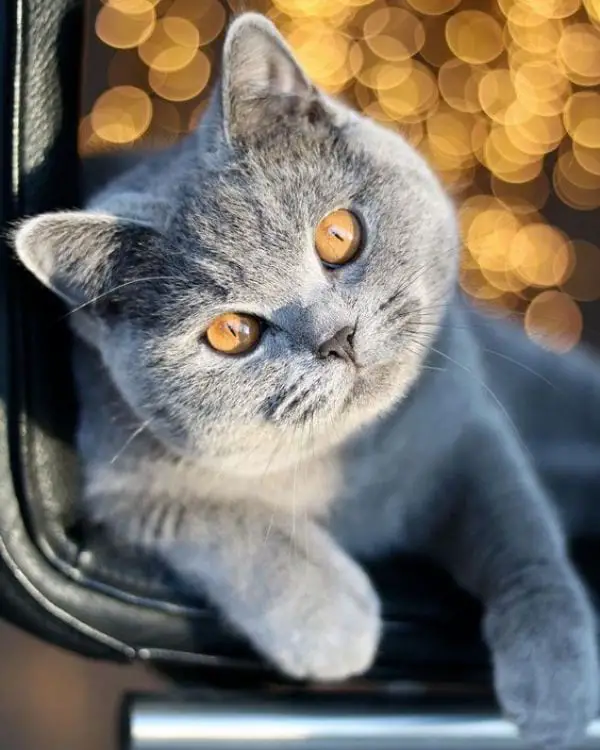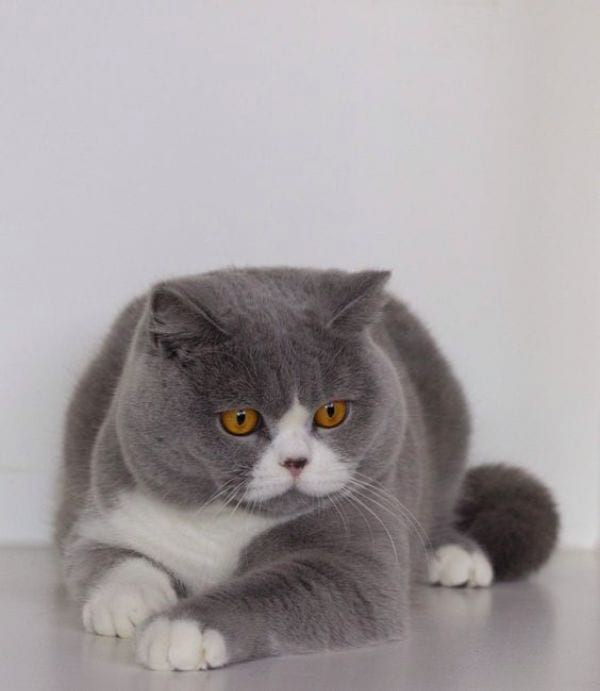If you have long dreamed of a living teddy bear that will delight you with a loyal nature, immense tenderness, love, and wonderful purring, then the British Shorthair cat with round cheeks and beautiful eyes is a dream that has come true. These cats are peaceful, affectionate, intelligent, and playful, they will be a great addition to any family.
When you think of British Shorthair cats (BSH), the first thing that comes to mind is a large cat with short, thick blue hair and large amber eyes. However, there are many variations of colors and patterns of these cats, including such colors as smoky, chocolate, lilac, and fawn.
Below, we will take a look at the different British Shorthair cat colors so that you can more easily decide on the color of your new pet.
British Shorthair Colors
The origins of the British Shorthair most likely date back to the first century AD, making it one of the most ancient identifiable cat breeds in the world. Many people mistakenly believe that the birthplace of British Shorthair cats is Great Britain, but the history of these beauties is really captivating.
There are several versions of the origin of the British Shorthair breed. According to one of them, the history of the BSH cat is connected with the history of the conquest of Britain by Rome. Supposedly, the Romans brought with them Egyptian cats, which eventually adapted to a new habitat, acquired thick hair with excellent protective properties, and, thanks to their unsurpassed hunting talent, became valuable domestic pets.
As for another version, the history of the British cat is closely related to the history of the French cat – Chartreuse. These animals probably came to the territory of modern Europe from South Africa during the Crusades. First, they were bred by the Cartesian monks at the Chartreuse monastery, and then they sailed to the British Isles with French sailors.
The first officially recognized representative of the breed was a white cat, and this happened in London in 1889. During the Second World War, the British breed was practically destroyed, and after the war, breeders combined their efforts and restored it.
People assume that the difficult period of near extinction was overcome thanks to the efforts of various breeders, including Keith Wilson. As for the life of this breed in America, they appeared in the land of the free in 1901 but were recognized as an independent breed only in 1980.
British Shorthair cats are peaceful and affectionate. However, they are not as tame as Ragdolls and prefer to sit next to a loved owner rather than lie on his lap. The term “British Restraint” is definitely about them. These bewhiskered buddies are very calm and patient, get along well with children and animals. Besides, they are playful but not hyperactive.
Solid Colored British Shorthair Cats
A solid color of the coat means that on the cat’s coat, there are no spots, stripes, or other patterns. The classic colors are blue and lilac, the British Shorthair rare colors are chocolate and cream, and the rarest shades are fawn and brown. We’ll take a closer look at these colors below.
British Blue
This is the classic color, which has become the calling card of the breed. This color combines blue and gray shades and looks great. The undercoat may be lighter, but there should be no patterns and white spots. In addition to the blue coat, these cats have blue skin on the nose and paw pads. Their eyes are large and amber in color.
Lilac British Shorthair
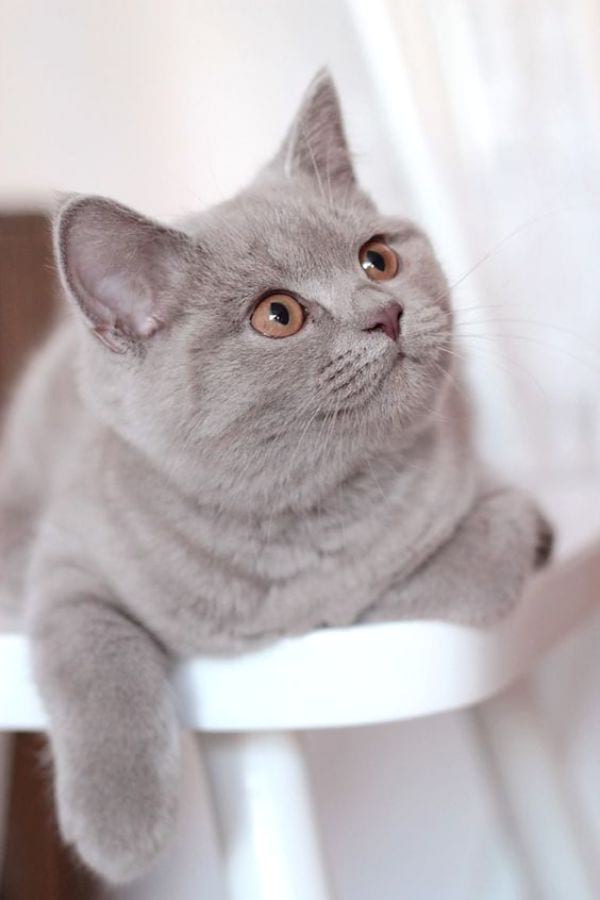
The lilac color combines several shades: pink and blue. Newborn kittens have a more pinkish coat color, while adults have a blue coat. Lilac kittens’ undercoat should be slightly lighter than the main color, the nose and paw pads should also be lilac. The eyes are either amber or copper.
Black British Shorthair
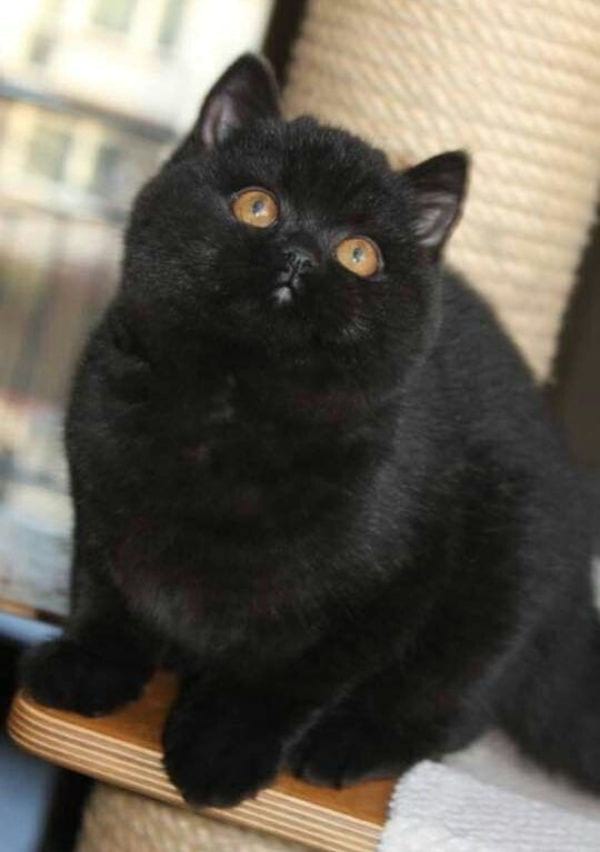
White British Shorthair
Snow-white beauties with light pink skin on the nose and paw pads will definitely win your heart. Their coat is cold white, any yellowing on the coat is unacceptable.
If there is any pigmentation, then a cat of this breed is not considered monochromatic. As for the eyes, they can be multicolored, aquamarine, or blue.
Red (Ginger)
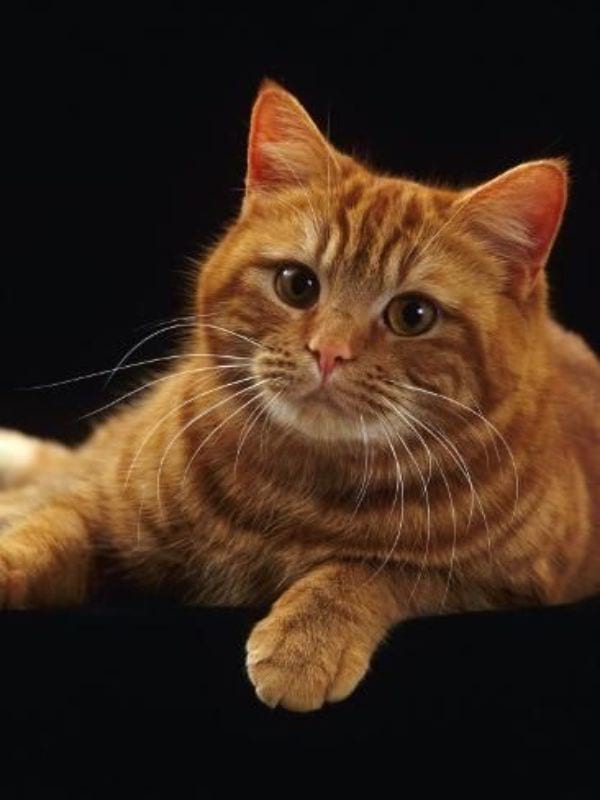
Fire kittens are rarely monochromatic, most often they have stripes on their paws and forehead, and the shade of the coat is a mixture of red and orange. The eyes of British Shorthair orange cats are copper or orange, and the nose and paw pads have a red tint.
Cream
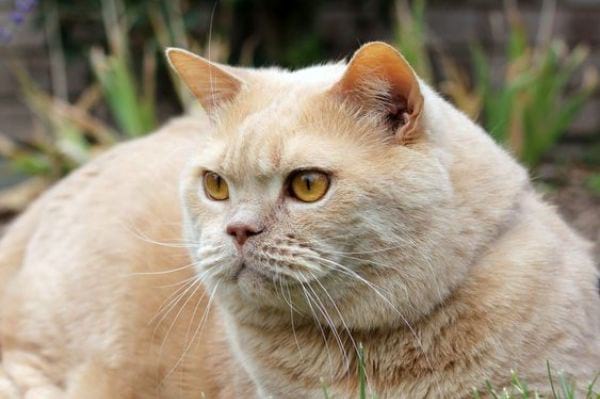
These cuddle babies can also have a striped pattern on their fur (also known as freckles), which makes them look super cute.
The nose and paws of a light pink color complete the look of a cute and affectionate kitten.
British Shorthair Chocolate

Adult kittens tend to have a rich brown color, which can be either dark in color or the color of milk chocolate. It is believed that the deeper this color, the more elite such a pet.
Besides, areas or hairs of a different color are not acceptable. Chocolate kittens look absolutely adorable with big orange or copper eyes, and pink or chocolate-colored nose and paw pads make the kitten look even more astonishing.
British Shorthair Cinnamon Cat
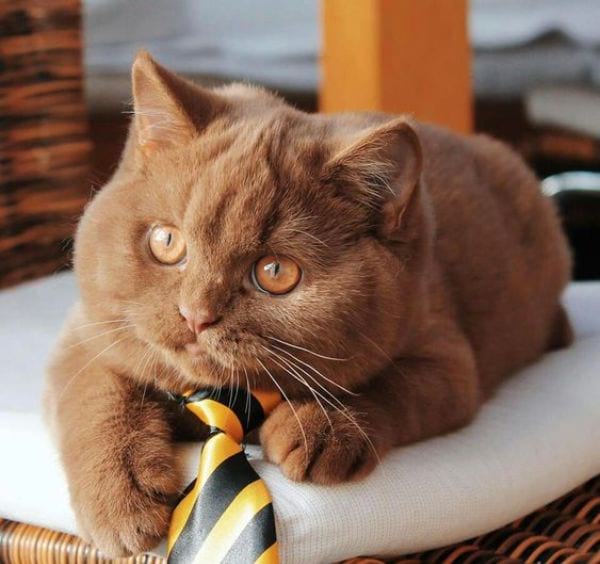
British Shorthair Fawn
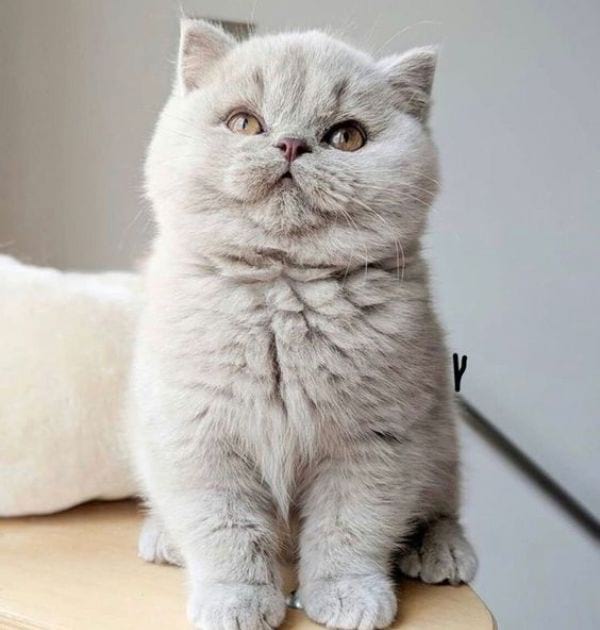
The color of the nose and paw pads are pinkish-fawn and blends beautifully with the coat color. Since it is very rare to meet such a cat, buying this feline is of great value.
It is highly likely to buy a cream-colored pet instead of a fawn British Shorthair cat, since the DNA analysis is carried out to establish the reliability of this color, and a special document is issued. If the breeder does not have this document, then it is not reliable.
Tortoiseshell (Tortie) Colors
This unique color is a combination of spots with a mosaic pattern, where one of the colors of an intense shade (black, chocolate, brown), combined with red, or a diluted shade (blue, lilac) combined with cream is presented. There is no tortoiseshell gene, the X chromosome is responsible for this pattern. Only female cats can be torties because females have two X chromosomes, tortoiseshell British Shorthair cats have two sets of genetic information that can determine their coat color.
These furry beauties can be chocolate or black or have a cream body with a bluish or purple tint.
- Black tortoiseshell (Tortoiseshell BRI f)
The combination of black and red shades must be evenly distributed. Black should be very saturated and red should be bright. Both shades must be present on the legs. Sometimes the presence of mixed spots is considered acceptable. - Chocolate tortie BRI h
The combination of chocolate and red shades must have the same proportions, the colors must be harmoniously combined, and be of high intensity. The presence of spots of mixed tones is acceptable for this pattern. - Blue-cream BRI g
The combination of blue and cream shades must be equivalent, and the colors must be evenly distributed along the entire coat length. The overall color must be either medium blue or pale cream. A cream-colored patch extending from the forehead to the nose is present. - Lilac cream BRI j
Lilac and cream colors are mixed in equal proportions. All colors must be clear, the predominance of one of the colors is not allowed. Besides, there is a red mark from the forehead to the nose. - Tortie smoke BRI fs
The classic tortoiseshell pattern is combined with a smoky color. This color features a light undercoat. Smoky colors come in various combinations: - Blue cream smoke BRI gs
The body of the cat has a mixed color of blue and cream. Practically any degree of tipping is acceptable. - Chocolate tortie smoke BRI hs
The color of the coat is a mixture of chocolate and red. On the sides, ears, and abdomen of the pet, a silvery hue prevails; there is darkening under the cat claw, and on the face, there is an intense chocolate-red color. The undercoat is white, and the nose and paws can be pink or chocolate brown. - Lilac-tortie smoke BRI js
The color of the coat is a combination of lilac and cream shades. The belly, sides, and ears are silvery, and the undercoat is white. The nose and paws can be either purple or pink.
Tabby Colors
A distinctive feature of this pattern is the letter “M” on the forehead. On the body, there are colored stripes, which are also located on the ears; on the tail and paws, there are narrower stripes. Regardless of their location, these markings are dense and well-defined; white spots or white hairs are unacceptable.
BSH cats can have the main three tabby colors: Classic tabby, Mackerel tabby, and Spotted tabby.
- Classic tabby
The markings on the body have a beautiful butterfly pattern located on the shoulders. The tail has a pattern in the form of rings, and on the back, there is a line that extends from the butterfly pattern to the tail. - Mackerel tabby
There are narrow stripes throughout the body, and on the tail, there are ring-shaped stripes that can be either continuous or broken. - Spotted tabby
The cats got this name due to the spotted patterns on their paws. The pattern is similar to the classic striped tabby, however, there may be dark spots on the coat.
Color Points
This color is a sign of incomplete albinism and implies the presence of contrasting areas on the feline’s body. This coloration is similar to Siamese, as the moggy has the cs gene.
Due to this gene, pigmentation occurs only in cold areas of the body. This means that the face, tail, legs, and ears of the BSH are darker because the temperature in these areas is the lowest. The eyes of these bewhiskered companions usually have various shades of blue.
There are several color point color options for British Shorthair cats.
Solid color point patterns
Pets feature a light beige body and dark points without any pattern. The nose and paw pads are the same shade as the points, and the boundary between the base color and the markings should be clear. There are several types of solid colorpoint patterns.
- Seal point BRI n33
The body of the cat is light cream, and the markings are dark brown. - Chocolate point BRI b33
The body is ivory, and the markings are chocolate. - Blue point BRI a33
The base color is blue-gray, and the markings are blue. The nose and paw pads are also gray. - Lilac point BRI c33
The base color is white, and the markings are lilac. - Red point British Shorthair BRI d33
The coat is a warm cream shade and the markings are red. The nose and paw pads are pinkish-beige. - Cream point BRI e33
The body is white, and the markings are cream-colored. - Cinnamon point BRI o33
This color is quite rare, the main color of the coat is light beige, and the markings are golden cinnamon. - Fawn point BRI p33
The color of the coat is white, and the points are sandy beige. The nose and feet are pinkish-beige.
Tortoiseshell Color Points
The body color is beige or light cream, spots are red or cream. The nose and feet are the same shade as the points.
Tabby color points
There is a tabby pattern on the points, and this is the main feature of this color. There is an “M” pattern on the forehead, and the main coloration is a mosaic pattern.
Silver color points
The undercoat is white, the base color is also light, and the markings have light shadow stripes.
Shaded silver British Shorthair and Shell (chinchilla)
In chinchilla BSH cats, the color of the tips of the hairs is very light in comparison with the points, and the eyes are blue.
Tipped Colors
This color looks astonishing because it has a pale coat of one of the main colors in combination with a silvery undercoat. This mix definitely looks mesmerizing!
Colors Mixed with White
There are several colors mixed with white, these include bi-color cats, calicos, mitted, van, and harlequin.
Bi-color
Bi-color cats feature two main colors: black, blue, purple, and white. British Shorthair black and white cats are pretty common.
About half of the total color of the feline should be white.
On the head of the cat, there should be a white triangle with clear boundaries, the chest, paws, and abdomen should also be white, and the main color should be present on the back and head. The border between these two hues must be clear, and the presence of white on the base color is not allowed.
Van
The Van color means that a feline has a white body and a few white spots on the head. The ears must be white, and the tail must be completely colored.
Harlequin
Harlequin is similar to the Van color, but the difference is that the colored areas are located not only on the head and tail but also on the back and paws.
Mitted
The Mitted color is not recognized by the standard for the color of cats. Mitted cats have small white areas, and the white color is located on the belly, chest, and neck. Besides, there are “mittens” on their paws that make them extra cute.
Calico
Calico British Shorthair cats have three main colors, including white. These colors do not intersect and have clear boundaries.
Color Myths
The cat is one of the most magical animals on earth. British Shorthair kittens come in a wide variety of colors. Some people believe that a cat’s color can have a profound effect on people and even change their fate. Below, we will look at the main colors of British cats and consider their meanings.
- The black cat has strong astral abilities, eliminates negative energy in the family, and also gives wisdom to its owner.
- British Shorthair Blue cats bring good luck and provide a sense of security.
- The tricolor cat brings exceptional good luck to all family members.
- The tortoiseshell color is considered a talisman that brings family happiness.
- British Shorthair tabby cats bring good luck, energize with humor and enthusiasm.
- Ginger cats are considered protectors and healers.
- White cats can make life more spiritual and fulfilling.
- Gray cats give inner beauty and harmony.
- Calico cats bring happiness and prosperity to the home.
- Golden British Shorthair cats and cream felines give optimistic feelings.
Frequently Asked Questions
What is the rarest color of British Shorthair?
British Shorthair cats can feature various unusual colors, such as chocolate and red. But the rarest colors are cinnamon and fawn.
Do British Shorthairs have stripes?
Yes, there are British Shorthairs with tabby markings. For instance, ginger British Shorthair cats can have white stripes.
What are eye colors in British Shorthair cats?
The eye color of British Shorthair cats can vary widely. However, they must have intensely orange eyes if they are show pets. Blue or mismatched eyes are acceptable in white BSH cats, and green or hazel shades are acceptable in only black silver tabbies. Pure eye color is required, without any kind of iris flecks or rims of other colors.
Bottom Line
As you can see, British Shorthair cats have a variety of colors and patterns that make them super attractive. You can choose a kitty of any color and be sure that you’ll become a parent to a cute, affectionate, sweet, and playful feline.
Table of Contents
